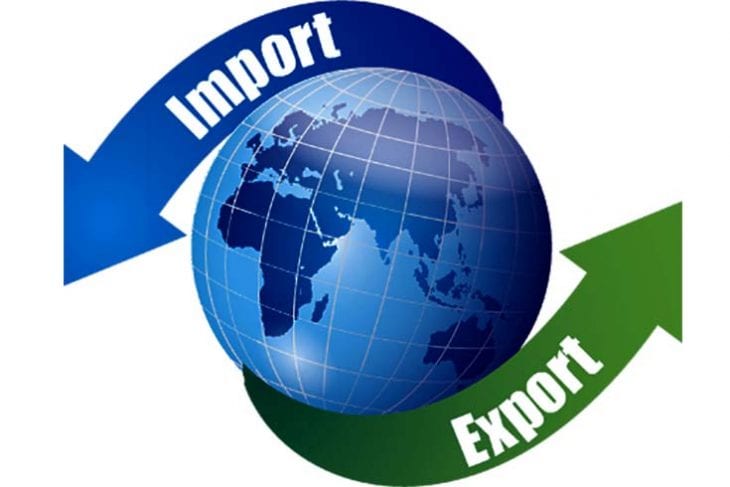If you are considering starting an import/export company, there are a slew of factors you want to analyse. Really, this can be true for beginning a company in almost any business. For an import/export company, especially, it is helpful to have a history in business, international relations, or even worldwide fund. This ought to provide you comprehension of the myriad hoops you have to jump through to market or purchase a product from an international provider.
“The compliances make it so complicated that even if you really did know how to get it done, you are going to need to remember a great deal of random concerns,”
says Selena Cuffe, co-founder of Heritage Link Brands, a business that imports, exports, and creates wine, along with other high-end goods such as honey and tea.

Source: eGTCP Blog
Contents
Story Time
She had been motivated after visiting South Africa, where she attended the very first Soweto Wine Festival.
“At the festival were literally the very first black winemakers and vineyard owner’s post-apartheid, showcasing their goods for the very first time to the entire world,” states Cuffe. “It was serendipity and enlightenment once I had my very first glass. That is the way I got into the wine industry –once I discovered there wasn’t any distribution to the U.S. market, and they had been hardly dispersing within their own nation.”
Heritage Link Brands now works within the wine sector in various ways: It imports wine from South Africa to the U.S. wine marketplace, and it exports blossoms from its South African vineyard into the U.S. in addition to the Philippines and Hong Kong. Additionally, it exports wine to airlines to be used on international flights.
However, so as to understand precisely how Heritage Link Brands does business, it is important to begin from the start. Here are the actions that you want to take to begin an import/export enterprise.
Get Your Company Principles in Order
Anyone starting a company in the 21st century should cover particular foundations, like developing a site in addition to social media channels such as Facebook, Twitter, and a range of others.
So here is your very first step: Get the fundamentals in order. This implies registering your company with the state where your headquarters will be found, registering for a domain name, obtaining any company licenses you want to lawfully operate, etc.
You are going to require a company plan, also. Part of the business plan should cover how to take care of the regulations and rules of the markets that you would like to function in. By way of instance, to bring tobacco and alcohol products in the U.S., you will need an Alcohol and Tobacco Trade and Tax Bureau license, which is totally free but can take weeks to get. Similar research has to be performed when doing business with other states, taking into consideration everything from assorted legal back tag requirements in each state to insurance.
Maybe above all, you require access to funding. Startup costs may fluctuate greatly based on the kind of imports/exports company you begin. Everybody knows it takes money to earn money, so it is helpful to get capital available when you are getting started.
Related Article: What is an Employee Leasing

Source: twitter.com
You need Funds for this Business
“The very first thing that I recommend for anybody would be to get your funds upfront,” says Cuffe. “That is so you can safeguard your company from not just a legal perspective but also the equity of the new which you create and also to remember to invest in the quality of everything you launch. Test a current market, or examine a town, then a country, then a region. I then think there are greater opportunities for sustainability and success long term.”
The ratio which Cuffe mentioned for achievement in the wine sector –“To be able to earn $1 million, you have to spend $1 million”–illustrates the type of capital required to begin a company comfortably (if you can be “comfy” as an entrepreneur) and also be ready for whatever happens, from difficulties with sourcing to changes in regulations.
The following step in establishing an import/export company is to discover a good or business you’re enthusiastic about which you believe could sell in global markets.
For Cuffe, this merchandise was wine. She felt a link to the item not only from a high quality and flavor perspective but from a social justice perspective too.
Discover Your Goods
“The biggest thing that we have allowed is the funding of black companies. When we got started, in order for these brands to produce their own wine they needed to supply it from present white wineries, since they did not have some land,” Cuffe states.
As soon as you discover your goods, you also should recognize the ideal market for this. After all, you will need someone to market it! That is where your trend-spotting abilities get involved. The best products for the import/export company are goods which are only beginning to be popular, or reveal some guarantee of being in the long run.
You might also find reports about the condition of this imports/exports business together with all the Census Bureau Foreign Trade.

Source: SCORE Dallas
From that point, it is ideal to begin “steady and slow.”
“Test your thoughts,” states Cuffe. “Do not presume that what you believe will sell since you love it will catch fire in the industry. What catches fire on the sector is much more than just the way it tastes–it is that you know, and also the packaging and serendipity of time, and each the indirect soft material which makes the difference.”
Supply Your Providers
As soon as you’ve got a product that you’d like to exchange internationally, you have to locate a local producer or other manufacturer who makes your merchandise and may cause a solid partnership. A fantastic relationship with a provider is essential to long-running achievement in an imports/exports company.
You’ll have to convince the provider of the advantages of entering the U.S. market (or a different market you would like to sell to), and find out the logistics of choosing their merchandise from their regional warehouse or manufacturing facility to a different one, possibly on the opposite side of the world.
You may also be your supplier–in some circumstances, as Cuffe sometimes is for himself.
“We have an interest at a vineyard in South Africa known as Silkbush,” she states. “My orientation once I do company to these is, 80 percent of those grapes we select we send away to national wineries using our blossoms to make their own proprietary luxury wine. The remaining 20 percent is used to make our proprietary tag Silkbush, which we export to overseas markets.”
You know what merchandise you wish to utilize and you have identified your target audience. Next up, figuring out just how much to bill.

Source: ECRA Pte Ltd
Normally, the company model in an imports/exports business contains two important understandings: The number of units sold, as well as the commission created on that volume.
Make sure you cost your merchandise such your markup about the item (what ends up being your commission) does not exceed what a client is ready to pay. However, you don’t wish to create it too low such that you are not going to generate a profit.
From the imports/exports sector, importers and exporters generally take 10 percent to 15 percent markup over what the manufacturer charges you as soon as you purchase the raw product.
